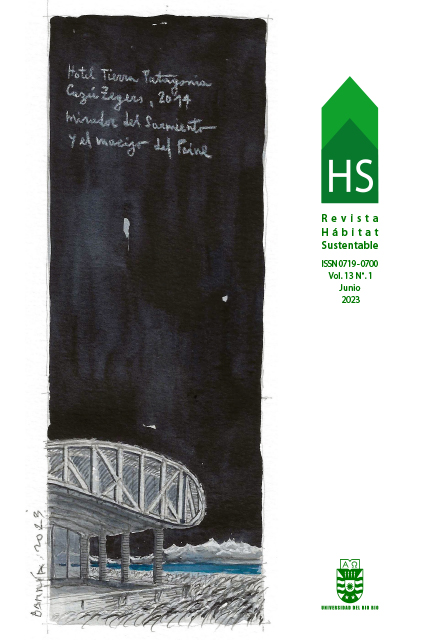Editorial
DOI:
https://doi.org/10.22320/07190700.2023.13.01.00Palavras-chave:
-Resumo
O editorial da Revista Hábitat Sustentable V13N1 só pode começar expressando nossos mais sinceros agradecimentos à Dra. Claudia Muñoz Sanguinetti por seu trabalho árduo nos últimos oito anos. Graças ao seu trabalho, a revista foi incluída em índices relevantes, como SCOPUS, SCIELO, EIHPLUS e EMERGING SOURCES CITATION INDEX (ESCI-WOS).
O esforço constante do Dr. Muñoz, juntamente com a equipe editorial, os autores, os revisores e o interesse dos leitores, nos permitiu melhorar o impacto da Revista HS. Neste ano de 2023, temos o prazer de anunciar que ela entrou no terceiro quartil na área de Arquitetura do SJR (Scimago Journal & Country Rank). Esperamos que, com a colaboração de todos, a revista continue a aumentar seu impacto e alcance.
Como novos editores, queremos enfatizar nosso compromisso com a importância da pesquisa nas áreas de projeto e construção do ambiente construído, com uma perspectiva local e mais próxima da realidade do Sul Global.
O Sul Global é um conceito que foi desenvolvido pelo economista alemão Willy Brandt na década de 1980. Ele é usado para descrever as diferenças econômicas, políticas e sociais entre os países do hemisfério norte (conhecido como Norte Global) e um grupo de países e regiões localizados principalmente no hemisfério sul, especialmente na África, Ásia e América Latina. Esse termo surgiu como uma forma de abordar a dinâmica de poder e as desigualdades que existem entre os países na ordem global. Ele reconhece as disparidades e os desafios enfrentados pelos países do Sul Global, onde persistem níveis significativos de desigualdade nos padrões de vida, na expectativa de vida e no acesso a recursos.
Downloads
Referências
-
Downloads
Publicado
Como Citar
Edição
Secção
Licença
Direitos de Autor (c) 2023 Maureen Trebilcock-Kelly, Alexis Pérez-Fargallo

Este trabalho encontra-se publicado com a Licença Internacional Creative Commons Atribuição-CompartilhaIgual 4.0.
O conteúdo dos artigos publicados em cada número do Habitat Sustentável é da exclusiva responsabilidade dos autores e não representa necessariamente o pensamento ou compromete a opinião da Universidad del Bío-Bío.
Os autores mantêm os seus direitos de autor e concedem à revista o direito de primeira publicação da sua obra, que está simultaneamente sujeita à Licença de Atribuição Creative Commons CC BY-SA que permite a outros partilhar, transformar ou criar novo material a partir desta obra para fins não comerciais, desde que a autoria e a primeira publicação nesta revista sejam reconhecidas, e as suas novas criações sejam licenciadas sob os mesmos termos.











 Programa de Informação Científica/Concurso Fondos de Publicación de Revistas Científicas 2018/ Proyecto Mejoramiento de Visibilidad de Revistas UBB (Código:FP180007)
Programa de Informação Científica/Concurso Fondos de Publicación de Revistas Científicas 2018/ Proyecto Mejoramiento de Visibilidad de Revistas UBB (Código:FP180007)





